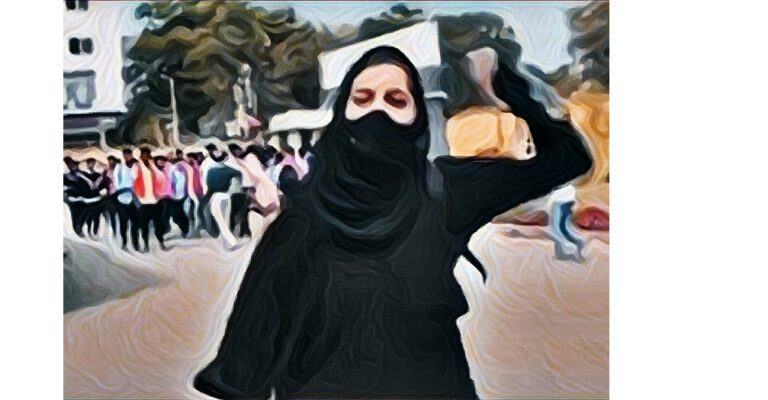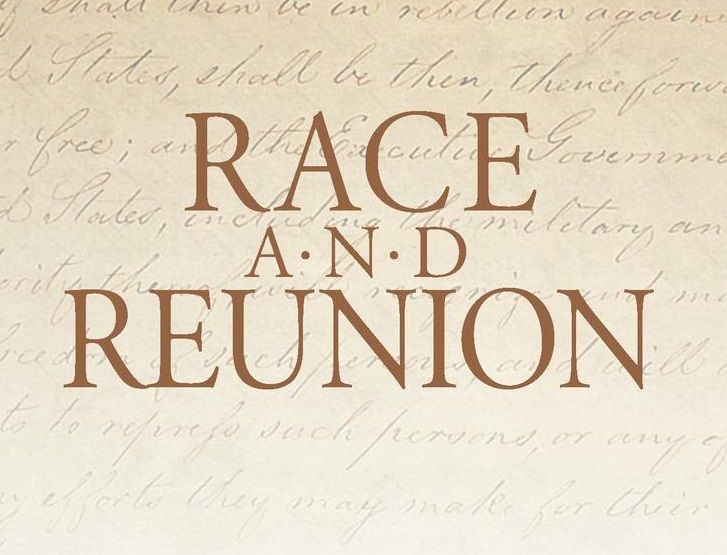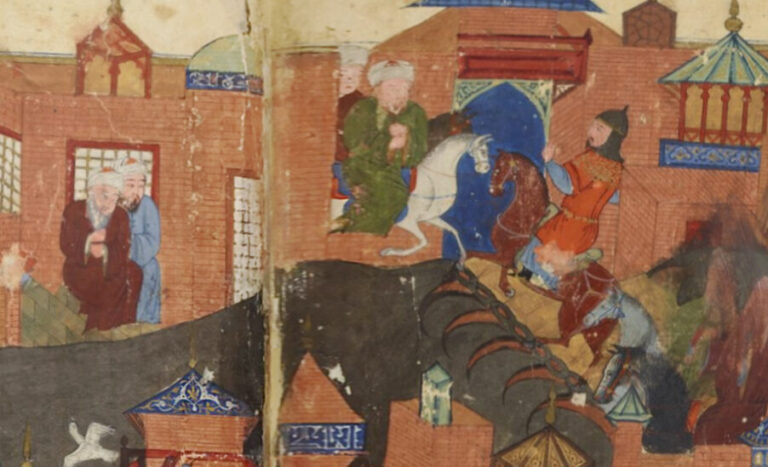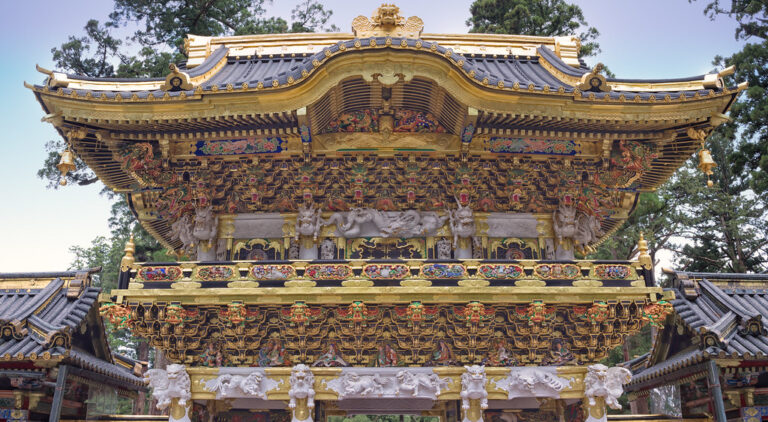SOAS History Blog Podcast Ep 9: Why Central Asia Matters
by Sophie Ibbotson, Chairman of the Royal Society for Asian Affairs
A version of this work was first presented at Goodenough College, 2022.
CW: this work contains explicit language
More about this episode

Sophie Ibbotson
Chairman, The Royal Society for Asian Affairs
she/her
In October 2022 I was invited by London’s Goodenough College to give a talk entitled “Why Central Asia Matters”. It’s a topic I feel passionately about because too often it seems that nobody notices or cares about what’s happening in a region I know to be critically important not only economically and politically but also culturally and environmentally. In the audience at Goodenough was Ellan Lincoln-Hyde, Editor of the excellent SOAS History Blog, who kindly invited me to revisit the topic here.
The SOAS community is in many ways the ideal audience for this podcast: I don’t have to preface my talk by explaining where Central Asia is, or why we should look at the world from a non-western perspective. There are also strong historic ties between the organisation that I chair, the Royal Society for Asian Affairs, and SOAS. The RSAA helped set up SOAS in the early 20th century. For many years SOAS had a reserved seat on our board of trustees, and the joint Schools Day we organise every year at SOAS for 6th form students has been the launchpad for numerous people to study or work in Asia.
I hope you enjoy the podcast; thank you for taking time to listen.

SOAS History Blog
Recording, Production and Transcription: Ellan A. Lincoln-Hyde

Podcast Transcript
Music: Oppoq (2018) by Asilbek Amanulloh
My name is Sophie Ibbotson, I’m the Chairman of the Royal Society for Asian Affairs, and since 2008 my life has revolved almost completely around Central Asia. I believe that what happens in Central Asia is critically important to the world we live in. I’m aware that not everyone shares that view, and indeed most of the general public have at best a hazy idea of Central Asia which falls somewhere between Borat and Joanna Lumley’s Silk Road Adventure. Today I’ll be talking about three interconnected topics which I hope will shed some light on Why Central Asia Matters.
Extract 1: Borat (2006) by Sacha Baron Cohen
Extract 2: Joanna Lumley’s Silk Road Adventure (2019) presented by the BBC
Music: Medina (2018) by Jah Khalib
Where there is Water, there is Life
Where there is water, life begins. In Aryan cosmography, the centre of the universe is Mount Kailash, a mythical peak from which the four mighty rivers of Central Asia spring. In the Book of Genesis and in the Islamic Hadiths, too, we are told that four rivers flow out from paradise. One of the rivers, Jaihan, is thought to be the Oxus, which rises in the Wakhan Corridor between Afghanistan and Tajikistan, runs northwest between Uzbekistan and Turkmenistan, and ends in the Aral Sea.
This concept of the navel of the Earth, and the quest to find its location, have a magnetic appeal. In the 19th century, Jewish and Christian scholars who took the Old Testament literally, as well as some notable archeologists, sought the Garden of Eden in the Pamir Mountains. Amongst them was Sir Gaston Maspero, an archeologist fluent in Sanskrit and hieroglyphics, who was regarded as the leading French Egyptologist of his generation. Maspero published four volumes about the history of the people of the orient, in which he wrote:
“All have preserved, mixed with the vague legends of their infancy, the memory of a primitive country where their ancestors had lived before their dispersion […] From the Plateau of Pamir, or better, from the mountain mass of which this plateau is the centre, four great rivers issue, the Indus, the Helmand, the Oxus, and the Jaxartes, which flow in direction the most diverse corresponding sufficiently to the four rivers of tradition.”
Gaston Maspero
The Pamir was, as George Curzon, Viceroy of India, later put it, the place which “rocked the cradle of our race”. To become caretaker of the shrine of Adam was on par with occupying Constantinople, the Second Rome; or the Church of the Holy Sepulchre in Jerusalem. It was a sacred duty for any monarch wanting to prove his divine right to rule. In an indication of his aspirations, the Russian Tsar added “Ruler of the Pamir” to his many titles.

By the late 19th century, possession of the Pamir was not just a religious imperative, it was also driven by racial ideology. As the purported cradle of the Aryan race and of Indo-European languages, the Pamir was a sensitive battleground, a place where lines could be drawn between different races and cultures. The Russians and British were rivals in what they saw as a civilising Christian mission to restore the region’s lost glory. The Russian geographer and military officer Major-General Mikhail Venyukov demanded the “return of the Slavs to the neighbourhood of their prehistoric home… at the sources of the Indus and Oxus.” He argued that the Slavs — as he saw it, the true heirs of the Aryans — had been forced out by Turko-Mongol invaders, and should reclaim what was rightfully theirs by a combination of military force and inter-marriage. Venyukov was what we would now call a eugenicist: he believed that selective breeding between the Aryan and Turanian races would bring out their best qualities, and thereby stabilise Russia’s position in Central Asia.
This grim combination of religious fervour and desire to enforce a racial hierarchy was nevertheless insufficient to motivate Britain or Russia to commit significant resources to the cause. There had to be something more to rouse the interests of decision makers in London and St Petersburg and get boots on the ground in the Pamir. Two long-running international issues came to a head, and the Pamir was the answer to them both.
Firstly, for much of the 19th and early 20th centuries, Russia’s foreign policy priority was access to the Bosphorus, and through it the Mediterranean and the Persian Gulf. That’s still a preoccupation of Moscow today: look at Russia’s obsession with controlling Crimea. The British were acutely aware that Russia’s defensive security and ability to project herself as a formidable power depended on control of the Bosphorus, and so did everything they could to thwart Russian naval ambitions in the Turkish Straits.
Half a world away in Manchuria, on the other side of the Russian Empire, there were also tensions. Russia had forced China to cede all of Outer Manchuria by 1860. As a result, China lost access to the Sea of Japan. Further south, Russia also leased Port Arthur on China’s Liaodong Peninsula, a strategic asset which would pass back and forth between Russian/Soviet and Japanese control until 1950. Manchuria was rich in natural resources, Port Arthur was the warm water port Russia craved, and they were both invaluable imperial possessions, projecting Russian power to the east. But they were also considerably closer to Beijing than St Petersburg, and vulnerable not only to a grudge-bearing China, but also to Japan, whose own international ambitions were growing. The British, omnipresent, were already supplying the Japanese with Western technology, including an Aberdeen-built warship, and had commercial interests and a naval presence along the Chinese coast.

You might reasonably wonder what the Bosphorus and Manchuria have to do with Anglo-Russian rivalry in the Pamir. One word: distraction. The British were terrified that the Russians would follow in the footsteps of Alexander the Great, Genghis Khan, Amir Timur, Babur, Nadir Shah, and more than a dozen other historic invaders and attack India — the jewel of the British Empire — from Central Asia. As unviable and unrealistic as this prospect was, the Russians were more than happy to stoke British paranoia. It stood to reason that the more worried the British were about the threat of Russian encroachment on the Indian Subcontinent, the more resources and attention they would commit to that theatre. Russia would therefore meet less resistance in the places where it really mattered to them, namely the Turkish Straits and the Far East. It was a simple strategy, and not even a secret.
“The keys of the Bosphorus are more likely to be won on the banks of the Helmand,” wrote Curzon in 1899. “To keep England quiet in Europe by keeping her employed in Asia, that, briefly put, is the sum and substance of Russian policy.”
George Curzon
Neither the British nor the Russians had an appetite for large-scale, direct conflict in Central Asia. Solutions to the so-called Central Asian Question were debated in libraries and newspapers, at public lectures and official dinners, and over uncountable bottles of wine and vodka in all manner of surroundings. In the UK, the Central Asia Society, which would later become the Royal Society for Asian Affairs, was created in 1901 as a forum for precisely these discussions.
The definition of Central Asia was far larger than it is today, and was far more politically charged. Speaking at the Central Asia Society’s second Annual Dinner in 1908, Curzon told his audience:
“Central Asia is not merely a geographical formula, but a comprehensive phrase opening up a political problem of the first magnitude. These countries… form a part of what seems to be the most complex and intricate, and also the most important political mosaic to be seen on the face of the globe.”
George Curzon
But which countries did Curzon have in mind? Professor Rhys Davids, Secretary of the much older Royal Asiatic Society, perhaps uncharitably nicknamed the new Central Asia Society as “Central Asia Unlimited”. The Russian military geographer and Orientalist General Andrei Snesarev wrote a book titled India as the Main Factor in the Central Asian Question, and included in his definition “our” Turkestan, Khiva, Bukhara, northern India, Kashgar, the Pamirs, Tibet, Afghanistan, Baluchistan, and eastern Persia. The British approach was no less sweeping. Dr Alfred Cotterell Tupp, one of the Central Asia Society’s founding members, thought it legitimate that the Central Asian Society discuss all of Asia, excluding Siberia, the interior of India, China, and Japan. Curzon felt strongly that as the society’s raison d’etre was the defence of British India, any country which in any way affected India’s security or might determine her future was ripe for inclusion. The challenge was always going to be agreeing how to divide such vast areas of the world up in a way which was mutually agreeable. It was the age of empires and laughable to think that the right of local people to self-determination was even a consideration. What mattered to decision makers in London, St Petersburg, and Calcutta was that they could reach an agreement both sides would keep.

But never mind the Russians: even the inner circle of the Central Asian Society couldn’t decide what ought to constitute a diplomatic red line. Sir Alfred Lyall, a former Foreign Secretary and Lieutenant Governor of the North West Frontier Provinces, supported Russia’s claim to Turkey, and believed Russia also had a legitimate interest in expanding her territory to the border with British India. His colleagues were appalled. Sir George Macartney, British Consul-General in Kashgar, stated in a public lecture that sooner or later Britain would have to let the Russians take Tibet. Cotterell Tupp wrote to Sir Francis Younghusband (who was at the time leading the British invasion of Tibet) about this in disgust, and put forward his own position:
“Without any war, we can let Russia know that we will not let her have either Tibet or Chinese Turkestan; and we can agree on her taking Mongolia and Zangaria and leaving us the former two […] We should draw the line at the Tian Shan Mountains and tell Russia that she shall not come south of that.”
Cotterell Tupp
Demarcation of these spheres of influence was inevitably slow, painful, and always unpopular with someone. It took decades. Officially, the work was completed with the signing of the Anglo-Russian Convention in 1907, which ended the dispute over Persia, Afghanistan, and Tibet. But some of the decisions made were on decidedly dodgy grounds, and as in the course of the 20th century these lines between spheres of influence solidified into actual international borders, disagreements continue to the present day.
Music: Лейла (2017) by Jah Khalib
De-colonisation
I hope that sets the scene for why outsiders felt Central Asia was so critical to international affairs. What it also does is emphasise the widespread view that the people and countries of Central Asia were entirely without agency, to be discussed rather than consulted, and possessed rather than viewed as sovereign actors and partners. Still we hear, and I’m guilty of having used such phrases, too, that this is Russia’s backyard, China’s sphere of influence, a buffer zone, a borderland.
Even the commonly used term “the Stans” is deeply problematic, as Diyora Shadijanova argued last year in The Calvert Journal. By lumping together very different countries purely on the basis of their suffix, in a way we’d never do for England, Poland, and Finland, for example, we trample over vast geographies and distinct identities, lazily replacing them with one, admittedly catchy nickname. But that nickname is often used to evoke negative connotations: when people say Londonistan or Bradistan, it’s rooted in Islamophobia; and when after the 2004 US presidential election the term “Dumbfuckistan” was coined to refer to states which elected George W Bush, the not-so-subtle message was that these are places which are uneducated, dysfunctional, and generally backward. It’s unsurprising, then, that Kazakhstan has mused about changing its name, dropping the -stan in favour of something like Kazakh Eli, which means “Kazakh People”. Kyrgyzstan attempted a name change, too: since 1993 the country has officially been called the Kyrgyz Republic, though the national branding is a confusing hybrid. I want to talk about the topic of nation building and identity more, because 30 years after independence, the five Central Asian republics are starting to challenge the repressive colonial narratives and structures which Russia, then the Soviet Union, and then Russia again, used to indoctrinate and control people.
Music: Muras (2018) by Mirbek Atabekov
Many people have claimed the Soviet Union was an anti-imperialist state, that it was a commonwealth or federation of states, not an empire. Terminology is important, but so too is lived experience. What are now the Central Asian republics were incorporated into imperial Russia and then the USSR by force, with bloodshed. Their borders were drawn in Moscow, and their indigenous leaders and traditions were repressed. When Central Asia’s newly independent states started searching for national heroes, writing school curricula, reviving vernacular languages, and rebuilding their national identities in the 1990s, they didn’t look to Russia and the north for inspiration; they went back to their Turkic and Persian roots and started to re establish diplomatic, economic, and cultural ties with the likes of Afghanistan, Iran, and Turkey. Ties to Russia remain, of course, not least due to use of the Russian language and the economic importance of remittances from Central Asian migrants working in Russia, but it does seem that Russian soft power in the region is waning, and the individual republics are forging their own paths.
This is a trend which has accelerated and become more explicit since Russia invaded Ukraine. Contrary to expectations, governments in Central Asia have not kowtowed to Russia. In June, Kazakhstan’s President Tokayev refused to recognise the Donetsk and Luhansk People’s Republics, echoing a precedent set by Uzbekistan’s then Foreign Minister, Abdulaziz Komilov. All the republics with the exception of Turkmenistan, whose borders are still closed due to COVID, have welcomed large numbers of Russians fleeing conscription. And at a UN vote last September, none of the countries voted with Russia on a resolution condemning Moscow’s illegal annexation of Ukrainian territory. Unlike Russian allies such as Belarus and Syria, they all chose to abstain. These actions demonstrate that Russia can no longer assume the support of countries it once regarded as subjects; they are identifying and pursuing their own objectives in foreign and economic policy, as well as in social and cultural development.

Determination not to be taken for granted is a powerful force, and one which China may well be confronted with, too. Here, though, there’s a clar division between the position of Kyrgyzstan and Tajikistan on one hand, and Kazakhstan and Uzbekistan on the other. Kyrgyzstan’s debt to foreign creditors is upwards of $5.1 billion, 42% of which is owed to China; and in Tajikistan, that percentage is around 60%. There’s also a great deal of secrecy surrounding how much is actually owed, what loans were taken out for, and the repayment terms. This makes both countries very vulnerable: they risk having to hand over lucrative assets to China if they fail to meet their repayment obligations, and there are many who are concerned, not unreasonably, that default could also be used as the pretext for the annexation of territory or a China-backed regime change.
In Kazakhstan and Uzbekistan, the picture is different. Uzbekistan’s President Mirziyoyev has spoken repeatedly about the importance of pursuing a multi-vector foreign policy, and the government applies the same diversified approach to trade and investment. China is the country’s largest creditor, accounting for around 20% of external debt, but that is a relatively low percentage regionally speaking and it is also counterbalanced by other major creditors such as Japan, South Korea, France, and Germany. Russia, incidentally, is way down the list. With a wider choice of trade, investment, and diplomatic partners, the governments in Astana and Tashkent can be more selective about the deals they do, and on what terms. They can also afford to listen to, and be seen to respond to, public sentiments: nationwide protests in 2016 in Kazakhstan against Chinese land grabs and investment schemes resulted in a freeze and then outright ban on the lease and sale of agricultural land to foreigners.
Music: De lacure (2019) by Айқын Төлепберген
Regional Dynamics
In the final part of this podcast I want to build on the idea of a regional power shift and speak about its impact on security, diplomacy, and trade. As I alluded to earlier, the Soviet Union imposed a fairly impenetrable border along the southern edge of Turkmenistan, Uzbekistan, and Tajikistan, cutting these territories off for the best part of a century from their cultural siblings and historic business partners and making them look north to Moscow instead. Spearheaded by Mirziyoyev’s government in Uzbekistan, we are now seeing much greater interest in building strong relationships with Kabul, Tehran, Islamabad, and even New Delhi. Uzbekistan hosted the Central and South Asia Regional Connectivity Summit in 2021, and this September it hosted the leaders summit for the Shanghai Cooperation Organisation, with not only Xi Jinping and Vladimir Putin in attendance, but also, critically, India’s Narendra Modi, Pakistan’s Shehbaz Sharif, Iran’s Ebrahim Raisi, and Turkey’s Recep Erdogan. What this says to me is that the international community – and in particular major players in Eurasia – no longer see Uzbekistan as a peripheral actor. Perhaps for the first time since Amir Temur sat on his throne in Samarkand, ruling an empire which stretched from Ankara to Delhi, it’s at the heart of decision making. For me there are two topics which epitomise this new order, and they both relate to Afghanistan.
Topic 1 is the Trans-Afghan Railway, officially first mooted by Mirziyoyev in 2018 but an idea stretching back to the 19th century. I spoke about Russia’s dreams of a warm water port; well, doubly landlocked Uzbekistan and its neighbours would also benefit immeasurably if they could easily get their goods to the sea. Back in 2011, Uzbekistan built a 75 km rail link from the Afghan-Uzbek border town of Hairatan to Mazar-i Sharif. The next phase of the project would link Mazar to Kabul and then to Peshawar, connecting into Pakistan’s railway network and ultimately to the seaports of Karachi, Gwadar, and Qasim. Outline construction plans have been drawn up and a feasibility study is underway. If the project is completed, it will cut the transit time for cargo between Uzbekistan and Pakistan from 35 days to 3-5 days. At least $4.8 billion of investment would be required, but according to forecasts by the Uzbek Ministry of Investment and Foreign Affairs, trade between India and Pakistan and Afghanistan and the Central Asian republics could then reach $26 billion a year as early as 2025.The elephant in the room, of course, is the Taliban. Is the present government of Afghanistan a reliable partner for such an ambitious infrastructure project? Will sanctions deter international investors? This moves us neatly on to Topic 2: how should the international community treat the Taliban?
Music: Muras (2018) by Mirbek Atabekov
Uzbekistan has more skin in the game than most. The Trans-Afghan Railway aside, the two countries share a not insignificant length of international border. Uzbekistan is Afghanistan’s biggest electricity supplier, and the Oxus or Amu Darya – the river which irrigates much of Uzbekistan’s agricultural land and provides its drinking water – rises in Afghanistan’s Wakhan Corridor. It’s not the kind of relationship you can just opt in or out of. Before the collapse of President Ashraf Ghani’s government and the return of the Taliban in summer 2021, Uzbekistan was already positioning itself as a regional power broker. Controversially, a Taliban delegation had been invited to Tashkent three years earlier, so a channel for communicating with their leadership was already open. The Central and South Asia Regional Connectivity Summit coincided with the Taliban’s rapid march across northern Afghanistan, so inevitably the conference agenda shifted to security concerns, and attendees wanted to listen to what Uzbekistan had to say. One year on, in July 2022, Tashkent again convened a forum, this time for 100 delegations from 30 countries – including the Taliban, the EU, and the US – to meet, state their demands, and seek concessions from one another. It wasn’t unprecedented as the US negotiated with the Taliban in Doha, but this time it was a regional power, not the West, which was driving international engagement. It was also the largest multilateral event the Taliban had participated in since taking over Afghanistan.

Why Central Asia Matters
I believe that Tashkent’s approach to the Taliban is driven by pragmatism, but it is not offering a warm welcome at any cost. At the July event, Mirziyoyev reiterated the generally agreed international position that “forming a broad representation of all layers of the Afghan society in state governance, ensuring basic human rights and freedoms, especially of women and all ethnic and confessional groups,” is the prerequisite for the Taliban gaining formal diplomatic recognition. The diversion in opinion comes from how best to realise a common goal of a stable, secure, and peaceful Afghanistan where human rights are upheld. What, ultimately, gives the international community greater leverage over the Taliban? Is it the stick that is sanctions and isolationism, or the carrot of engagement? So far the jury is out, but Uzbekistan seems to be pushing all parties for a negotiated settlement. Crucially, what Afghanistan looks like in 10 or 20 years time may well be shaped not by NATO and its allies, or by the conventional regional heavyweights of Russia and China, but by its relationships with its immediate neighbours.
Music: Жаным жаным (2022) by Moldir Auyelbekova
Read more about the Royal Society for Asian Affairs on their blog: rsaa.org.uk
SOAS History Blog, Department of History, Religions and Philosophy, SOAS University of London







